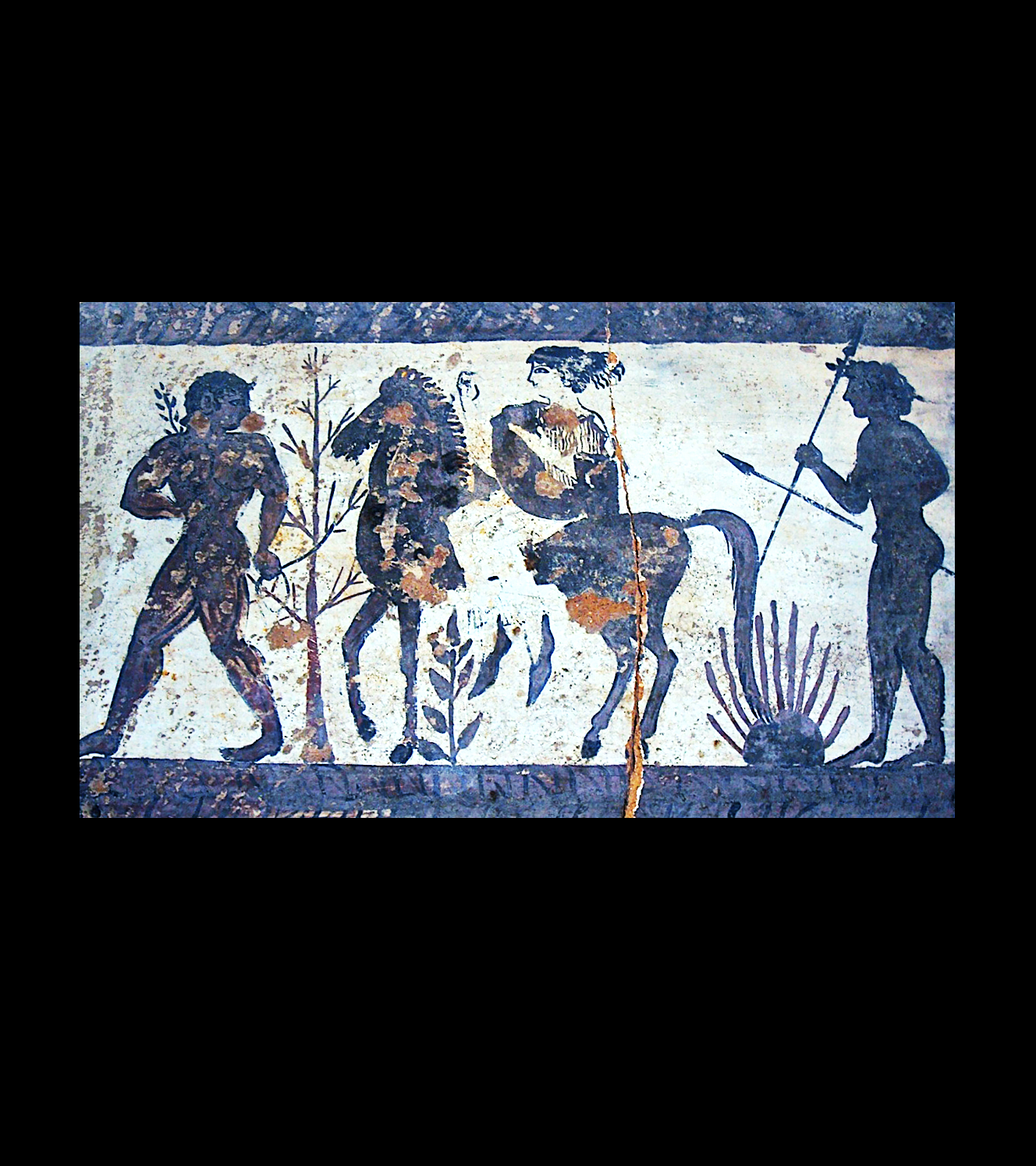

Title: Rare Etruscan Fresco Human figurative Mural Wall Art Painting
Shipping: $29.00
Artist: N/A
Period: Antiquity
History: N/A
Origin: N/A
Condition: Museum Quality
Item Date: 5th century BC
Item ID: 5981
EXTREMELY RARE AND WITH EXPORT PERMIT: ETRUSCAN FRESCO. c. 5th century BC. 48 x 24 cm. 5.8 kilo. Broken in two sections. Minor paint loss consistent with age. No apparent repainting or restoration. Very rare! Provenance: In the collection of the grandfather of the current owner for many years. Italian Ministry of Culture Export Permit. Price on request. Fresco (plural frescos or frescoes) is a technique of mural painting executed upon freshly laid lime plaster. Water is used as the vehicle for the pigment and, with the setting of the plaster, the painting becomes an integral part of the wall. The word fresco (Italian: affresco) is derived from the Italian adjective fresco meaning "fresh". Fresco may thus be contrasted with secco mural painting techniques, on plasters of lime, earth, or gypsum, or applied to supplement painting in fresco. The fresco technique has been employed since antiquity Etruscan art objects are intense, whether superbly intricate, or simplicity itself. Their tension vibrates through the air. Patrons favored expressive, figurative art that looked "natural." To this naturalism, Etruscan artists added a good deal of abstract design. Even so, specific individuals remain in the fog. Nobody "famous" is in evidence. The Etruscans' cultural counterpart, the Greeks. Greek art influenced Etruscan artists, and Etruscans collected Greek vases by the ton. But soon the Etruscans surpassed the Greeks in portraiture, jewelry, metalwork, and a sense of motion in their art. Vases and tomb frescoes depict a culture of earthy sensuality. Some Etruscan tomb frescoes would earn an "X" rating in Hollywood. Both men and women wore gold, gilded and bejeweled bracelets, armbands, necklaces, and tiaras. The artisan would heat the gold and affix it by the technique of "granulation" into patterns on a gold base. Unfortunately, since no kilns or goldsmith workshops have been found, modern archeologists cannot entirely recover these Etruscan techniques. Women wore earrings and rare and costly amber, imported from the Baltic Sea communities. The amber was perhaps a fertility symbol. Men and women of the wealthy upper classes dressed alike: both donned a long tebanna, precursor to the Roman toga, and mantles, with shoes curved upward in points at the toes. A lush culture indeed--for the wealthy elite. *All of the art is edited and chosen by us for its high quality and workmanship before posting. We are committed to enhancing our customer’s lives by discovering creating, and pointing out only the best art we can find in the world today. We Are Taste-Makers, Art Advisers, Consultants & Publishers Of Spectacular Art Stories. Our job is to be intermediaries between buyers and sellers. We are vetting for high end art patrons. We are determined to catalog the world's most exceptional art and share it with everyone.
Link: http://en.wikipedia.org/wiki/Etruscan_art
Etruscan art was the form of figurative art produced by the Etruscan civilization in central Italy between the 9th and 2nd centuries BC. Particularly strong in this tradition were figurative sculpture in terracotta (particularly life-size on sarcophagi or temples) and cast bronze, wall-painting and metalworking (especially engraved bronze mirrors and situlae).
The origins of the Etruscans, and consequently of their artistic style, dates back to the people who inhabited or were expelled from Asia Minor during the Bronze Age and Iron Age (See the Villanovan culture). Due to the proximity and/or commercial contact to Etruria, other ancient cultures influenced Etruscan art, such as Greece, Phoenicia, Egypt, Assyria and the Middle East. The apparent simple character in the Hellenistic era conceals an innovative,and unique style whose pinnacle coincided with the Greek archaic period. The Romans would later come to absorb the Etruscan culture into theirs but would also be greatly influenced by them and their art.
Etruscan art was often religious in character and, hence, strongly connected to the requirements of Etruscan religion. The Etruscan afterlife was negative, in contrast to the positive view in ancient Egypt where it was but a continuation of earthly life, or the confident relations with the gods as in ancient Greece. The Etruscan gods were hostile and tended to bring misfortune, and so Etruscan religion was centered on interpreting their will and accepting or satisfying it. On the other hand, most remains of Etruscan funerary art have been found in excavations of cemeteries (as at Cerveteri, Tarquinia, Populonia, Orvieto, Vetulonia, Norchia), meaning that what we see of Etruscan art is primarily dominated by depictions of religion and in particular the funerary cult, whether or not that is a true reflection of Etruscan art as a whole.